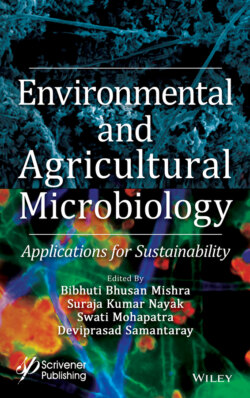Читать книгу Environmental and Agricultural Microbiology - Группа авторов - Страница 35
2.2 Effects of Hexavalent Chromium Toxicity 2.2.1 Toxicity to Microorganisms
ОглавлениеChronic exposure to hexavalent chromium has many deleterious effects on the structure and function of the microbial cells, and in some cases, it also causes dormancy. It leads to species loss and disturbs the diversity. Growth of Scenedesmus acutus was inhibited when it treated with more than 15 ppm of hexavalent chromium [14]. Spirogyra sp. and Mougeotia sp. were found forming Cr(V) while exposed to Cr(VI) [15]. The lag growth phase of Euglena gracilis was lengthened when treated with Cr(VI) and motility was also lost due to the modifications in the cytoskeleton induced by Cr(VI) [16]. It was reported that the photosynthesis was inhibited due to the presence of Cr in the cells of Scenedesmus sp. and Chlorella sp. [17, 18]. The sulfate transport system mediated transport of chromate ions has diverse toxic effects in the cytoplasm of Salmonella typhimurium, Alkaligenes eutrophus, Escherichia coli, and Pseudomonas fluorescens. According to Viamajala et al., (2002) [19], the minimum concentration of Cr (VI) (0.015 mM) has slowed down the growth of Shewanella oneidensis. The reduction of growth was observed in mycelium of fungi due to the toxic effect of hexavalent chromium. Interference of chromium causes gene mutation and conversion which further lead to growth inhibition in fungal cell [16].
